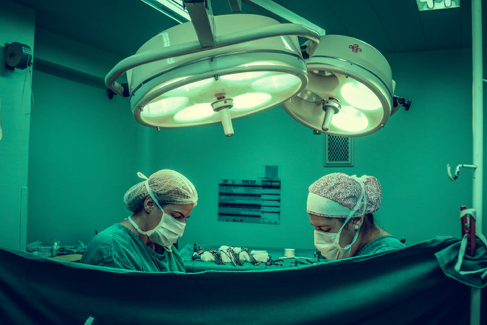In 2021, advanced technology is making its way into just about every industry. This especially pertains to the healthcare sector, which has been experiencing numerous changes for a decade. With this rapid increase in technological advancement, we can predict where the health sector will stand in the future.
Even at our Vascular Surgery and Vein Center, we ensure that you receive the best treatment with the latest technologies. That is how we can treat venous conditions in the safest and effective environment. In this article, you will understand the latest treatment options you have for varicose or spider veins.
What are Varicose and Spider Veins
The blood circulates throughout our body to provide oxygen and energy. On the way back to the heart, it carries carbon dioxide and waste materials. When the blood leaves the heart, pressure from the valves helps the blood reach the body parts. The blood leaves the body parts, and it needs a push to return to the heart, acting against gravity.
To run this process smoothly, your veins have valves at each end. The valves prevent blood from flowing backward. You start to noticing varicose and spider veins when valves are unable to close properly. This stops the blood from flowing forward, and eventually, it fills up your blood vessels.
2021 Treatments for Varicose & Spider Veins
1. Endovenous Laser Ablation
Endovenous Laser Ablation or EVLA is an advanced heat technique that enables the vein specialist to destroy the varicose veins. This treatment is similar to Endovenous radiofrequency ablation, including utilizing the radiofrequency to remove the abnormal vein from your body. Likewise, radiofrequency ablation, EVLA, also includes a catheter to perform the procedure. The size of this thin tube may differ depending on how long the varicose vein is.

(Source)
The vein specialist will insert the tube inside the vein that you want to get rid of. Once the tube enters the vein, the specialist will push forward fiber laser optics through the tube. They will then use high beam laser technology to generate heat and destroy the cells on the vein’s inner layer. This scars the tissue, closing the ends.
This technique’s main purpose is to close the abnormal vein, so the blood starts circulating through other healthy veins. Once this happens, the damaged veins start to shrink. This enables tissues to absorb the damaged vein making everything normal.
2. Ambulatory Phlebectomy
Many experts suggest this technique to remove bulging veins, making this the ideal option for you. During diagnosis, the specialist will rely on ultrasound technology to inspect the problem and bulgy veins. In contrast, the specialist will use a marker to map out the vein before starting the procedure. You should know that the varicose veins are deeper inside than they are visible from the skin.
After marking the veins, the specialist will massage the affected regions and numb them using local anesthesia. Once the bulging vein area is numb, the specialist will make small incisions, tracing the varicose veins. With the help of a hook-like tool, the specialist will drag out the vein, removing it from your body.
Once the specialist completes the procedure, they will use surgical tape to close the cuts and cover your leg with compression stockings. After the procedure, you can simply leave the doctor’s office normally and perform normal activities. During recovery, you will experience slight pain and swelling. Though, this period will last for a week or two. Doctors will prescribe medication such as Ibuprofen to ease the pain.
3. Sclerotherapy
Sclerotherapy is a less painful treatment, including numerous variations such as normal sclerotherapy and ultrasound-guided sclerotherapy. Vein specialists usually recommend this technique for tiny varicose veins. This technique is simple and requires inserting a solution into the damaged vein via an injection. The solution will scar the veins, diverting blood flow to normal veins. Similar to EVLA, the vein will dissolve with the help of tissues surrounding it.
Firstly, the doctors will recommend simple sclerotherapy. In this treatment, you see instant results. Due to the solution’s sticky nature, the vein will immediately close while it enters inside your vein. But with heavy doses of the solution, some patients might experience side effects, such as irritation, for a few days (Source). The circulation process returns to normal after the recovery period.
(Source)
On the other hand, if the bulgy veins are hardest to find, the vein specialist will perform ultrasound-guided sclerotherapy. With ultrasound images, the doctor will identify veins and decide between laser and liquid sclerotherapy to eliminate the veins completely. After the procedure, patients have to wear compression stockings to speed up the recovery process and avoid failure.
Conclusion
While you undergo the treatment process, you need to ensure that the vein specialist is highly qualified to perform the treatment.
If you want to visit a professional vein specialist in New York City, you can contact our vein treatment center at 212-993-6133. Dr. Norman Chideckel has extensive experience in performing all the latest treatments for spider and varicose veins. He will diagnose your condition and recommend the best possible treatment.


